If you want to get a bonsai tree from a shop or a friend, it is important to choose one that is healthy and has the potential to become a good bonsai tree in the future. But which time of the year you get it is also crucial.
You should start growing a bonsai tree in early spring when repotting does the least damage to the tree. Repotting after you get a tree is necessary to promote the sound growth of the tree.
When to start bonsai

Ideally, bonsai trees should be grown from seeds on your own. If you do that, you can train and grow the tree into any style and shape you like. On the other hand, growing from seeds takes a considerable amount of time and effort to make a bonsai tree, even until you manage to create a basic tree shape that can be seen as a bonsai tree.
So for those who are busy working or not so sure they can take care of one so patiently, buying from a store or getting from bonsai lovers is a good option. You might think there is no time like the present and want to get one now.
But actually, which time of the year you get your bonsai tree is crucial because the bonsai tree you are going to get needs to be repotted in a new pot with new soil as soon as you get it.
While repotting, you know what kind of soil it has been planted so far and how the roots have grown by loosening the soil attached to the roots. Checking the roots and the soil is important before you start.
Check the roots
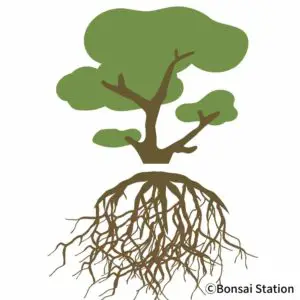
Repotting is the only time when you can see how the roots are doing; whether multiple, even-sized fine roots are growing or a few larger, longer roots are. The roots may be rootbound or not grown much after it is last planted.
Bonsai trees need even-sized, well-ramified, fine roots. Uneven thicker roots lead to elongation of some specific branches, which will deform your bonsai tree. By pruning the roots, you can promote the regeneration of a fine, well-ramified root system. It will also allow you to keep the tree healthy and enable you to shape the tree you want.
If you want to know more about this, please check the following post.
Check the soil
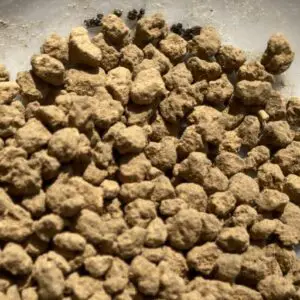
Akadama
The soil the tree was in is a clue as to how the tree is doing. And the new soil the tree you are getting should be altered according to the climate you live in and the environment where you place your bonsai tree.
The old soil may have been good for the tree so far but it might not continue to be so depending on where the tree has been and where you place it after.
For more information about the bonsai soil, please refer to the following posts.
“Best soil type and mix for your mini bonsai tree” (Link here)
“Kanuma vs. Akadama: a complete comparison” (Link here)
“Kanuma soil: a complete guide for bonsai” (Link here)
When to start bonsai
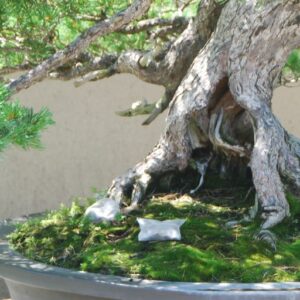
Checking the roots and soil will be helpful for planning and nurturing your bonsai tree going forward. Waiting another few months until the repotting time comes may not be a good idea for the tree’s health.
In summary, which time of the year you get a new bonsai tree is crucial and it has to be the time of repotting if circumstances allow.
When to start bonsai: by species
In general
Most plants become less active as temperatures drop in fall and are dormant in winter until temperatures go up again in early spring. The trees that have passed the full year from spring through fall in a pot have accumulated enough power to prepare for the next year’s sprouting and to regenerate roots.
It causes the least damage to the bonsai trees to repot in early spring when the trees wake up from the dormant state as they can recover quickly.
Coniferous/deciduous trees
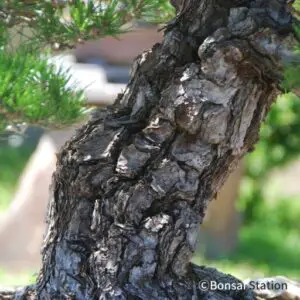
For most of the coniferous, deciduous and broadleaf evergreen bonsai trees, the general rule applies and the best time to start bonsai is just before the leaves sprout in early spring.
Although deciduous trees do not have leaves in early spring, it is a good time to carefully inspect the branch structure to see whether the tree has the potential to be a good bonsai tree.
Flower/Fruits trees
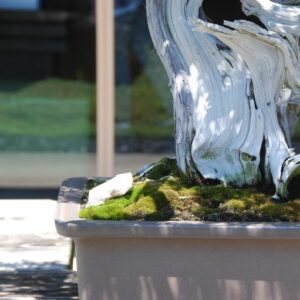
For flowering bonsai trees where you enjoy the flowers along with the tree itself, it is safer to get one when the flowers are in bloom because you might want to check the color, shape, size and number of flowers and see if you really like them.
But checking the flowers might be tricky because the timing of repotting or not repotting largely affects the flowering in the next season. As most of the flower trees need repotting every year or two, odds are that you need to repot the tree as soon as you get it. But not all of them are good for repotting after flowering. If they are not, you have to wait for the next repotting season.
Similarly, for fruiting bonsai trees, it is ideal to get one when the tree actually bears fruits and see what kind, size and color of fruits it produces. This is way better than someone explaining it to you in words.
Unfortunately for most of the fruit bonsai tree species, however, the best time for repotting is early spring. If you cannot repot it immediately, you need to wait until the time when you can do it.
By species
Some bonsai species can be repotted twice a year, which is shown as “alternative repotting” in the tables below.
Coniferous trees

spruce
Early spring is the best time to start coniferous bonsai trees as most of them have to repot in early spring.
| Best repotting | Alternative repotting | |
| Beed cypress | Early spring | |
| Buddhist pine | Early spring | |
| Cedar | Early spring | |
| Fir | Early spring | |
| Hemlock | Early spring | |
| Hinoki Cypress | Early spring | |
| Japanese black pine | Early spring | Early fall (70-75F) |
| Japanese cedar | Late spring | |
| Japanese red pine | Early spring | |
| Japanse white pine | Early spring | Early fall (70-80F) |
| Juniper | Late spring | |
| Larch | Early spring | |
| Pine | Early spring | |
| Redwoods | Early spring | |
| Shimpaku juniper | Early spring | Early summer (around 70F) |
| Spruce | Early spring |
※Early spring (50-55 degrees F)
Late spring (60-70 degrees F)
Deciduous trees by species
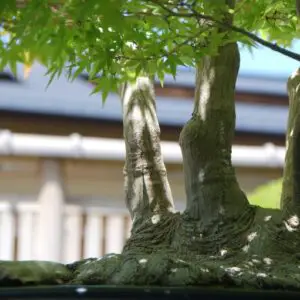
Japanese maple
Early spring is the best time to start deciduous bonsai trees as most of them have to repot in early spring.
| Best Repotting | |
| Beech | Early spring |
| Birch | Early spring |
| Boxwood | Early spring |
| Chinese elm | Early spring |
| Ginkgo | Early spring |
| Japanese elm | Early spring |
| Japanse maple | Early spring |
| Liquidamber | Early spring |
| Oak | Early spring |
| Trident maple | Early spring |
| Zelkova | Early spring |
※Early spring (50-55 degrees F)
Flower trees

Azalea
Early spring is the best time to start flower bonsai trees but you can wait for the flowers to bloom if you want to get azalea, cherry and plum trees.
| Best repotting | Alternative repotting | |
| Azalea | Just after flowering | |
| Camellia | Fall (65-70F) | |
| Cherry | Early spring | Just after flowering |
| Chinese quince | Early spring | |
| Chojubai quince | Fall (65-70F) | |
| Plum | Early spring | Just after flowering |
| Pomegranate | Early spring | |
| Rose | Before spring (40-50F) | |
| Snow rose | Early spring | |
| Star magnolia | Fall (65-70F) | |
| Wisteria | Spring (around 70F) |
※Early spring (50-55 degrees F)
Fruit trees
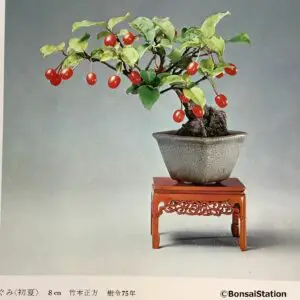
Silverberry
Early spring is the best time to start fruit bonsai trees as most of them have to repot in early spring.
| Best Repotting | Alternative Repotting | |
| Apple | Early spring | |
| Cotoneaster | Early spring | |
| Elaeagnus (gumi) | Early spring | |
| Myrtle | Early spring | |
| Peach | Early spring | |
| Pear | Early spring | |
| Plum | Early spring | |
| Pyracantha | Early spring | |
| Silverberry | Early spring | |
| Citrus trees | Late spring (70F) | Fall (60-70F) |
※Early spring (50-55 degrees F)



